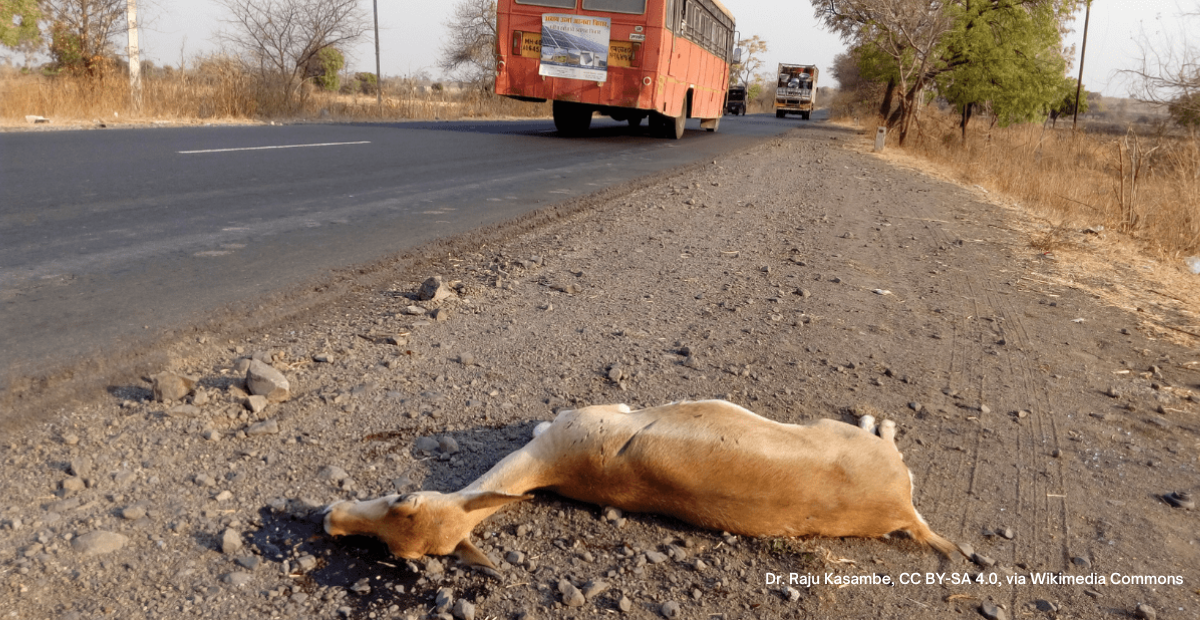Introduction
You may wonder what are the most common ways humans harm wildlife, because, as we know, wildlife faces many threats as a consequence of human activities and climate change. From vehicle collisions to habitat destruction, these challenges demand a thorough understanding to inform effective conservation strategies.
To find out the most common ways humans harm wildlife, we looked at a recent study that dives into digitized records from 94 wildlife rehabilitation centers across the United States and Canada, encompassing 674,320 cases between 2011 and 2019. By examining this extensive dataset, they analyzed the prevalence, patterns, and impacts of diverse threats on wildlife, identifying species at risk and proposing informed conservation strategies.
Understanding the Importance of Wildlife
Wildlife holds pivotal roles in our ecosystem, serving as indicators of health, food sources, cultural symbols, and attractions for tourism.
Beyond utilitarian purposes, wildlife also possesses intrinsic value, an essence that transcends its utilitarian significance.
As stewards of the planet, it is our responsibility to safeguard these irreplaceable components of biodiversity.
Finding out the most common ways humans harm wildlife: Rehabilitation Centers as Data Repositories

U.S. Fish and Wildlife Service Southeast Region, Public domain, via Wikimedia Commons
Wildlife rehabilitation centers emerge not only as sanctuaries for injured and sick wildlife but also as crucial data repositories. Wildlife rehabilitators meticulously document details such as species, condition, location found, and age, offering a treasure trove for ecological research.
While previous studies have tapped into rehabilitation records to find out the most common ways humans harm wildlife, this study stands as a pioneering effort, spanning a vast geographic area and encompassing a multitude of species.
The most common ways humans harm wildlife: Findings
According to the study, the most common ways humans harm wildlife are related to roads, clear windows, lead poisoning, climate events, and habitat alterations.
Impact of Road Networks on Wildlife
A striking revelation is the pervasive influence of road networks on wildlife health. Vehicle collisions emerged as the preeminent threat, constituting a substantial 12% of cases.
A more granular examination uncovered that, for great horned owls, cars are the predominant cause of admission. This underscores the intricate interplay between wildlife and human infrastructure.
Anthropogenic Habitat Alterations
The study underscores the profound impact of human-induced alterations to natural habitats. Development, farming, and industrial activities alter ecosystems, exposing wildlife to hazardous substances such as lead and pesticides.
The findings accentuate the urgent need for conservation initiatives that align with the preservation of these fragile environments.
Window Collisions: A Stealthy Hazard
An often-overlooked peril gains prominence as the study reveals that window collisions are the most frequent injury for the big brown bat. This underscores the imperative to address the threats posed by our built environment to our nocturnal counterparts.
Lead Poisoning in Avian Species
Bald eagles, emblematic of freedom and majesty, frequently present with lead poisoning. This serves as a stark reminder of the unintended repercussions of lead ammunition left in the wild.
The study accentuates the significance of adopting responsible practices in areas inhabited by wildlife.
Climate-Driven Challenges
The study elucidates the far-reaching ramifications of climate-driven extreme weather events on wildlife health. Southern Florida experiences spikes in admissions post-hurricanes and floods, emphasizing the need for adaptive conservation strategies in the face of a changing climate.
Proposing Solutions
The research not only unveils threats but also illuminates potential solutions.
Wildlife-friendly road designs, lead-free ammunition, and disaster management plans that integrate wildlife are pivotal steps toward effective conservation.
Individual actions are consequential; driving cautiously, supporting nonlead alternatives in fishing and hunting, and contributing to local wildlife rehabilitation centers collectively contribute to a meaningful impact.
Conclusion
This study stands as a testament to the power of data-driven conservation and the indispensable role of wildlife rehabilitation centers in shaping a sustainable future.
The goal of navigating through such an expansive dataset is not only to unravel the intricacies of threats to wildlife but also to translate these findings into actionable recommendations. Understanding the nuances of human-wildlife interactions, contributes to the conservation narrative, fostering a future where coexistence is not just a goal but a shared reality.
Every incremental change carries significance. Exploring local fauna, engaging with conservation initiatives, and contributing to underfunded rehabilitation centers are tangible steps toward safeguarding wildlife.
Together, we can architect a future where human activities harmonize with the preservation of biodiversity.
If you want to know what to do to help wildlife you can go here!
Full citation of the study:
Tara K. Miller, Karra Pierce, Edward E. Clark, Richard B. Primack,
Wildlife rehabilitation records reveal impacts of anthropogenic activities on wildlife health, Biological Conservation, Volume 286, 2023, 110295,
ISSN 0006-3207,
https://doi.org/10.1016/j.biocon.2023.110295.


2 responses to “What are the most common ways humans harm wildlife”
Somebody essentially lend a hand to make significantly articles I’d state. That is the very first time I frequented your website page and up to now? I surprised with the research you made to make this actual submit amazing. Wonderful task!
Thank you very much for your commment!